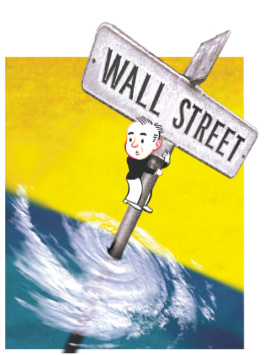 As the world financial panic set in motion by the subprime mortgage crisis reached full steam in late September, Bob Whaley’s phone began ringing. Interest in what financial writers call the “Fear Index” was spiking as stock prices plummeted and major Wall Street firms collapsed, and much of it was directed his way. The Fear Index, which is more properly known as the Chicago Board Options Exchange Market Volatility Index (VIX) and which has offered a real-time gauge of market jitters since 1993, was, after all, Whaley’s brainchild.
As the world financial panic set in motion by the subprime mortgage crisis reached full steam in late September, Bob Whaley’s phone began ringing. Interest in what financial writers call the “Fear Index” was spiking as stock prices plummeted and major Wall Street firms collapsed, and much of it was directed his way. The Fear Index, which is more properly known as the Chicago Board Options Exchange Market Volatility Index (VIX) and which has offered a real-time gauge of market jitters since 1993, was, after all, Whaley’s brainchild.
Whaley, Valere Blair Potter Professor of Management and an expert in derivative securities, did some interviews, but became increasingly annoyed by the articles and commentaries he saw. One after the other contained assertions he saw as “utter nonsense”—that the VIX was a self-fulfilling prophecy, that it was at unprecedentedly high levels, that it was a contrarian indicator.
“People were saying all sorts of unsupportable things,” he says, “so I decided to write a short piece that puts everything in proper perspective and corrects misconceptions people have because they haven’t dug deeply enough.”
For most people, the VIX, like the wider world of derivatives it reflects, skulks in a back alley of the financial world until there is a crisis, when it is hauled in for questioning that amounts to hysterical accusation rather than rational information gathering. What’s more, the recent fates of even the biggest, most savvy firms make clear there was more than enough ignorance—coupled with greed—to go around. If ever a subject called for light rather than heat, it is this one.
“It is not new,” Whaley says of the index. “It is not at unprecedented levels. And it does not cause volatility.”
It is, he contends, simply “a measure of expected stock market risk” set by the actions of investors as they work to protect their assets. More fully, the VIX is a weighted blend of prices for options on the Standard & Poor’s 500 Index (prior to Sept. 22, 2003, it was the S&P 100). Those options are in essence insurance policies protecting investors against broad-based market swings. The premiums they are willing to pay indicate their level of apprehension—hence the term “Fear Index”—about the market volatility they anticipate in the short term.
Whaley is amused by claims that the VIX is a contrarian indicator.

“One commentator said in September that since the VIX was above 35 it was time to buy stocks,” he says. “The only time a contrarian indicator makes sense is after the fact. While 35 might have been high relative to its recent history, it increased steadily to a level of over 80 in the days afterward. If you’d taken his advice, you’d have lost your shirt. The stock market fell by nearly 30 percent.”
He is similarly dismissive of its power as a self-fulfilling prophecy that adds to market anxiety.
“This type of thinking is exactly backward. The degree of market anxiety is reflected in investor demand for portfolio insurance, which sets the level of the VIX. Saying that the market is better off without the VIX is akin to an ostrich hiding its head in the sand.”
As for historic highs, the VIX is in one sense nowhere near them—projected backward, it reached its peak during the October 1987 market crash, spiking to levels well above 150. Since September 2008—the month that marked the beginning of the stock market’s deep dive—the VIX has not exceeded 90. On the other hand, its recent sustained level of more than 35 marked only the fourth time the index had spent more than 20 days in that range.
“So, yes,” says Whaley, “we are experiencing abnormal behavior, but, no, it’s not unprecedented. We just tend to forget.”
This article is an abridged version of the one that appeared in the Winter 2009 edition of OwenIntelligence. To read it in its entirety, click here.


One Response to “The ‘Fear Index’ and derivatives”
view website
I hate to disagree but I think the “fear” is at an all time high in regards to all aspects of the market place. Maybe it’s just me though.